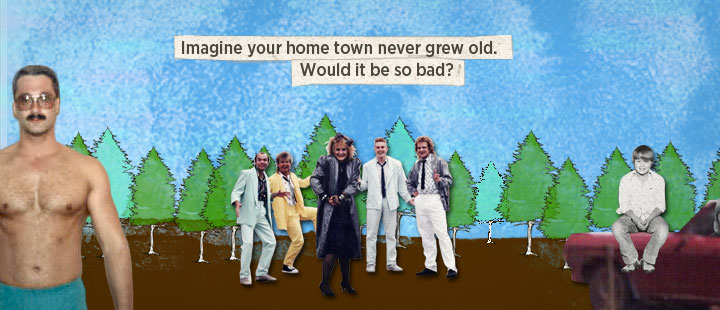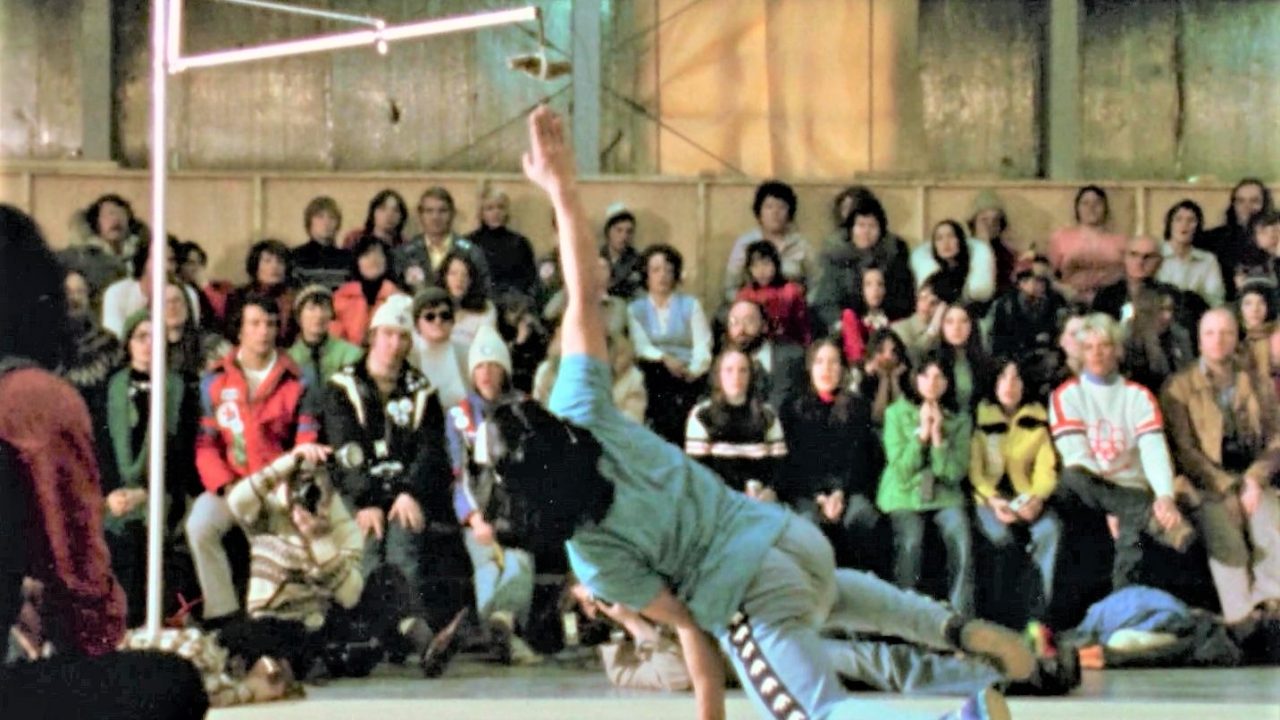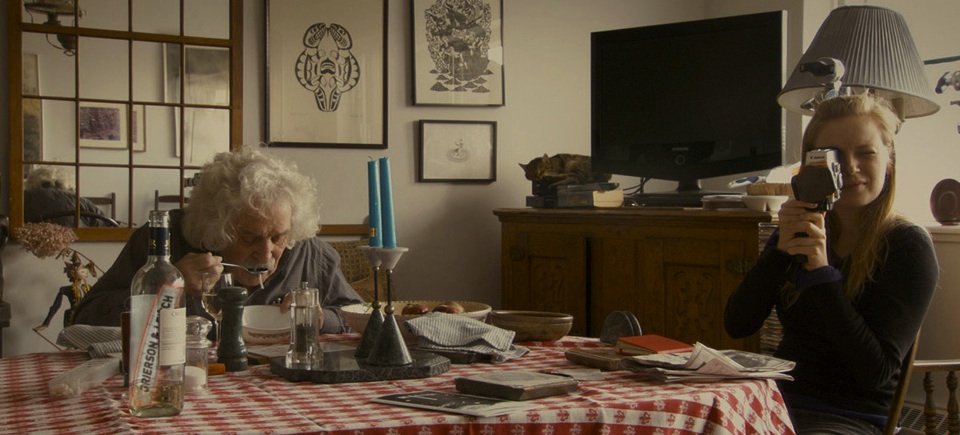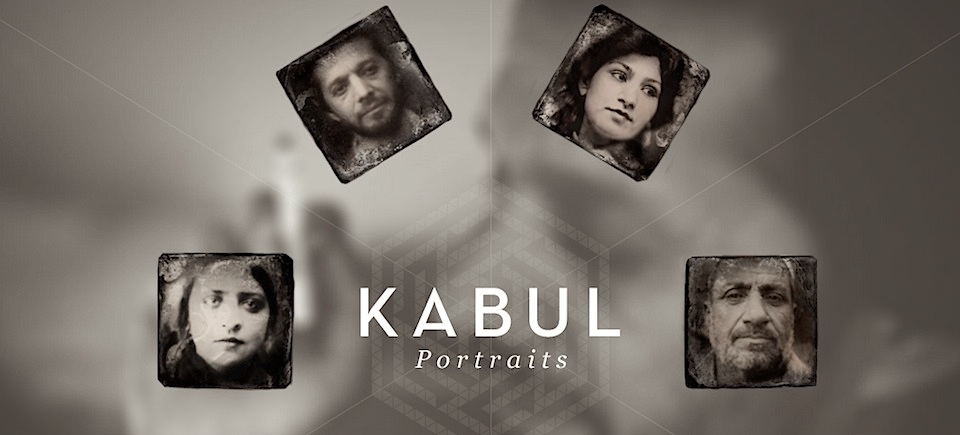
Welcome to Pine Point: An interview with The Goggles
Welcome to Pine Point: An interview with The Goggles
Some towns thrive and some towns fall to ruin, but a town that gets flattened to the ground and erased from the map altogether? That’s both highly unusual and exactly what happened to Pine Point, a Northwest Territories town that is the subject of a neat interactive project about memory and belonging recently launched on NFB/interactive, the Film Board’s interactive site.
The project, titled Welcome to Pine Point, was created by The Goggles (Paul Shoebridge and Michael Simons), a Vancouver-based duo best known for its creative direction work at Adbusters magazine. Since its launch, the project has attracted much positive attention. Canadian novelist Douglas Coupland called it “totally brilliant”, “so thoughtful and so powerful”, while its score, penned by the Besnard Lakes received enthusiastic reviews.
I recently had a three-way phone conversation with Paul and Mike from their office in Vancouver’s Gastown district. Here is some of what we chatted about.
(Check out Welcome to Pine Point)
Carolyne Weldon: How do you describe the project when friends or family ask what you’ve been working on?
Mike Simons: It’s a bit tricky. We’re not really able to compare Pine Point to anything else out there, because we’re not seeing other projects like it. It’s a new form of storytelling, really, so in conversations with people, I don’t know how to call it. It’s not a website, it’s not an interactive doc… what is it? Coming from print, part of the process for us was minimizing the interactivity to only those elements that serve to forward the narrative. We’re in a bit of uncharted territory here.
Paul Shoebridge: Coming from a print background, we were interested in doing something that retained some of the active elements of book reading. When you’re in front of the TV, you relinquish control of the experience. You are passive. With a book, you’re the narrator. You have to read the words yourself and make sense of them in your head. You have to paint the walls in the story yourself, so to speak. For Pine Point, we chose not to have a voice-over narration, but to let people be their own narrator. We tried to strike that perfect balance of passive and active, of visuals and words.
CW: What is some of the feedback you’ve been getting?
MS: This being a Canadian story, and a Northern Canadian story at that, we weren’t sure how well it would translate, or carry over. We have a lot of contacts in US from our previous work, and we weren’t sure about the reception the project would have there. So far, the feedback is that it’s got people thinking about their own past, their own hometowns, regardless of where they are from.
PS: Same thing for very urban audiences. Pine Point happened to be a departure point, but really, Welcome to Pine Point is a piece about memory, and how memory is utilized, filtered and activated. It’s way more a story about memory than a profile piece on a town.
CW: The About section of Welcome to Pine Point begins with the sentence “This was supposed to be a book”. What were some of the compromises you had to make to turn it into an interactive project?
PS: Not all that much, really. When we were at Adbusters, we established this style of visual experience where there are no ads, no page numbers… a style of magazine layout you could almost call “cinematic”. The project takes over some of these same themes. It is super lo-fi, with the cut and paste style of the text, for example. We stuck to our roots. In book form we would’ve been way more limited. I’m happy with what it became.
MS: We really weren’t sure at the beginning, about this “interactive” thing. It isn’t our background. But I think we discovered it is what you make it. I think storytellers – widely defined “storytellers” – should start entering this world and experimenting with the form.
CW: About the music, when and how in the process did it come into play?
MS: About the audio, our main intent was to satisfy people like us who turn the audio off when they visit this kind of project. Our goal was to minimize sound. When we started thinking about music, The Besnard Lakes was a natural choice for both of us. We both knew Jace from way back… from Regina originally and then Emily Carr [University], in Vancouver. They were fantastic to work with.
PS: It was a great fit. Their sound is somewhat haunting… sad and beautiful all at once. Nostalgic almost. Also fitting that Besnard Lake is a northern lake as well. [Besnard Lake (singular) is a real lake in Northern Saskatchewan.]
CW: Do you know of any other Canadian towns that disappeared the way Pine Point did?
MS: As far as we can tell, the situation of Pine Point is unique. There are other failed towns in Canada. Other towns that were abandoned, or repurposed. There are other ghost towns. But Pine Point’s circumstances as a town that thrived for a full generation, so far up North, and was then flattened? Completely erased, physically removed? That is unique.
PS (wistful): … except in the minds of people, of course! (Chuckles all around)
CW: What are you working on now?
MS: We’re working on a project about model railroads. We’re interested in this dying culture of toy railroads as a hobby. Most fans are in their 50s and 60s. We want to look at the control that these people exert over their little universes, but also explore the relationship of Canadians to trains in general. It would also serve as a study of the way hobbies are changing, from things that were tactile, or analog (like building model railroads) to our modern, digital hobbies.
CW: Would this be in book form?
PS: No actually, we’re hoping to do another online thing. We’ve started calling them “liquid books’. Like, not quite a web doc, not quite an interactive doc… some form of “rich book”. It’s good to have a strong linear narrative even if it’s presented in non-linear form. To still get a sense of “what’s the story here?” With this “liquid book” format, there is exploration within the narrative, but channeled exploration.
MS: You know, we like books. We’re attached to the format of books. So we started asking ourselves, what if books looked a little more like this?
-
Pingback: NFB Interactive: Hyperlocal features 5 projects by 5 Canadian writers | NFB.ca blog
-
Pingback: Pine Point: um documentário interativo que você precisa ver_Jornalismo Digital.org | Jornalismo Digital.org
-
Pingback: Exhibition Review: Welcome to Pine Point | Media and Materiality 2012
-
Pingback: Welcome To Pine Point « Media + Media
-
Pingback: The Besnard Lakes to release EP based on Welcome to Pine Point score | NFB.ca blog
-
Pingback: Welcome to Pine Point wins 2 Webby Awards | NFB.ca blog



